How to open a port of Firewall (TCP / UDP)?
How to open a port of Firewall (TCP / UDP) ?
hi guys i'm back welcome to my site Firewalls are there to protect you from internet threats (while trying to gain access to traffic from the Internet and local applications).
Sometimes, otherwise you will want to allow limited traffic through firewalls.
To do this, you have to open a port.
When a device connects to another device (including the Internet) on another network, it specifies a port number that allows traffic to be handled by the receiving device.
Where an IP address shows traffic on a particular device in a network, the port receiving the port number tells the program that it is a traffic program.
By default, the most unexpected traffic from the Internet is blocked by the firewall.
If you are running something like a game server, you will need to open a port for a specific type of traffic through the firewall.
Note: This post will show you how to open a port for a specific PC's firewall traffic. If you have a router on your network (which you probably do), you need to allow the same router with the same router port forwarded.
How to open a port on Windows 10
In the search box at the beginning, type "Windows Firewall" and then click "Windows Defender Firewall"
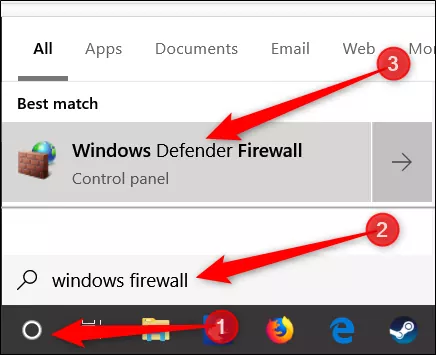
Now open the Windows Firewall, click on "Advanced Settings"
It introduced Windows Defender Firewall with advanced security.
On the left side, click the "Inbound Rules" category.
Click on the "New Rule" command in the remote panel.
If you want to open a rule for outgoing or outgoing traffic, instead of clicking "Inbound Role" you can click on "Outbound Rule". When most of the applications install, they know very well to create their Outbound Rule, but you can usually run one or not.
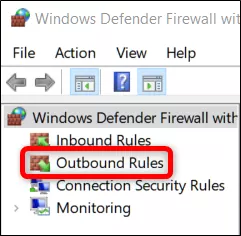
On the Rule Type page, select the option "Port" and then click on "Next"
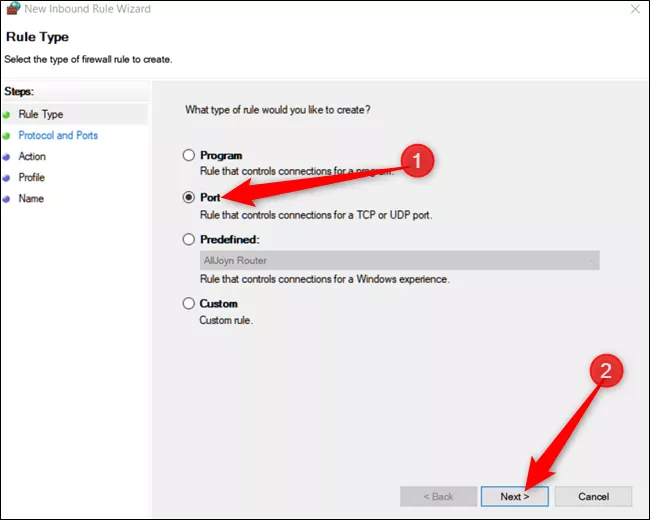
On the next screen, you must select the port that you have open using the Transmission Control Protocol (TCP) or User Datagram Protocol (UDP).
Unfortunately, I will not tell you what to use in particular because different applications use different protocols.
Port numbers can be 0-65535, ports are reserved for services approved up to 1023.
You can find an unauthorized list of (most) TCP / UDP ports in Wikipedia and you can search for the application you are using.
If you can not define a specific protocol for your application, you can create two new inbound rules - one for TCP and one UDP.
Select the "Specific Local Ports" option and then type port number in the empty room.
If you open multiple ports, you can separate comma.
Use a hyphen (-) if you want to open a range of ports (how many).
When finished, click "Next"

On the next page, click "Allow the Connection" and then click on "Next"
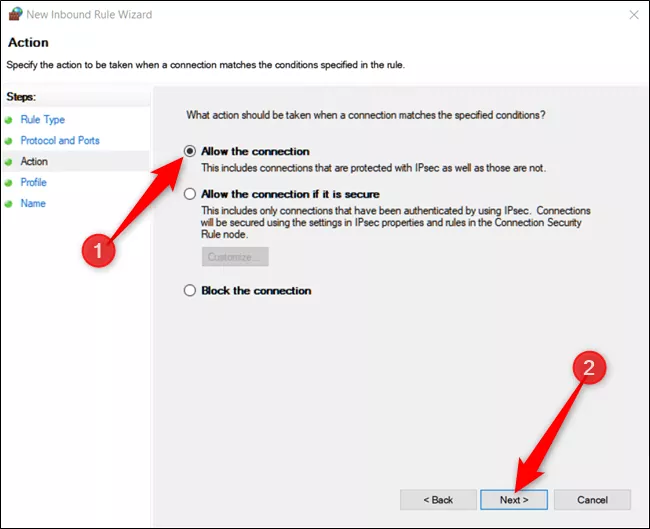
Note: For this guide, we will use the "Allow the Connection" option, because we believe we are creating a rule for the Connection.
If you want more, use Internet Protocol Security (IPS) to allow "Allow the connection if it is secure" form connection.
You can try that option, but many applications do not support it.
If you try a more secure option and it does not work, you can back it up and change it to a less secure location.
Later, select when the rule is applicable and click "Next". You can define one or all of the following:
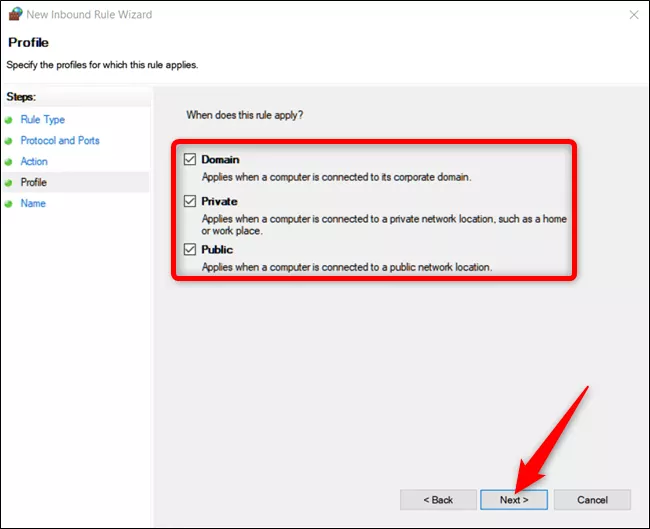
In the last window, give a name and details in your new rule (optional).
When finished, click "Finish"
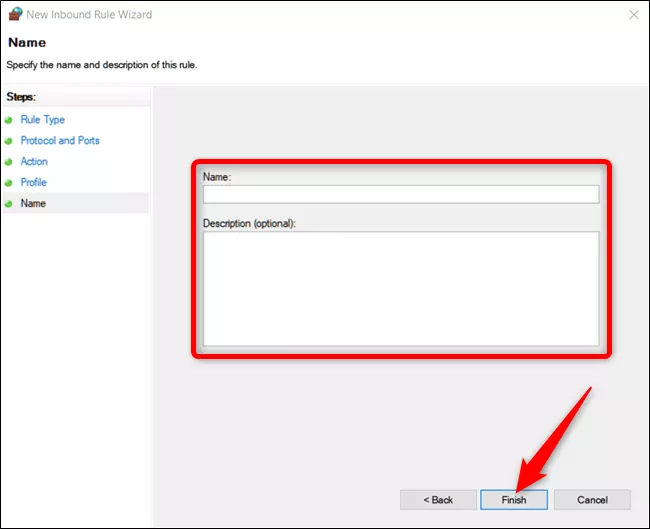
If you want to disable the rule anytime, find it in the Inbound or Outbound rules list, right-click it and then click on "Disable Rule"

It's over here! Go there to get it.
If you want to open with a different program or other rule for a different port, follow the steps above using a set of open ports.
hi guys i'm back welcome to my site Firewalls are there to protect you from internet threats (while trying to gain access to traffic from the Internet and local applications).
Sometimes, otherwise you will want to allow limited traffic through firewalls.
To do this, you have to open a port.
When a device connects to another device (including the Internet) on another network, it specifies a port number that allows traffic to be handled by the receiving device.
Where an IP address shows traffic on a particular device in a network, the port receiving the port number tells the program that it is a traffic program.
By default, the most unexpected traffic from the Internet is blocked by the firewall.
If you are running something like a game server, you will need to open a port for a specific type of traffic through the firewall.
Note: This post will show you how to open a port for a specific PC's firewall traffic. If you have a router on your network (which you probably do), you need to allow the same router with the same router port forwarded.
How to open a port on Windows 10
In the search box at the beginning, type "Windows Firewall" and then click "Windows Defender Firewall"

Now open the Windows Firewall, click on "Advanced Settings"
It introduced Windows Defender Firewall with advanced security.
On the left side, click the "Inbound Rules" category.
Click on the "New Rule" command in the remote panel.
If you want to open a rule for outgoing or outgoing traffic, instead of clicking "Inbound Role" you can click on "Outbound Rule". When most of the applications install, they know very well to create their Outbound Rule, but you can usually run one or not.

On the Rule Type page, select the option "Port" and then click on "Next"

On the next screen, you must select the port that you have open using the Transmission Control Protocol (TCP) or User Datagram Protocol (UDP).
Unfortunately, I will not tell you what to use in particular because different applications use different protocols.
Port numbers can be 0-65535, ports are reserved for services approved up to 1023.
You can find an unauthorized list of (most) TCP / UDP ports in Wikipedia and you can search for the application you are using.
If you can not define a specific protocol for your application, you can create two new inbound rules - one for TCP and one UDP.
Select the "Specific Local Ports" option and then type port number in the empty room.
If you open multiple ports, you can separate comma.
Use a hyphen (-) if you want to open a range of ports (how many).
When finished, click "Next"

On the next page, click "Allow the Connection" and then click on "Next"

Note: For this guide, we will use the "Allow the Connection" option, because we believe we are creating a rule for the Connection.
If you want more, use Internet Protocol Security (IPS) to allow "Allow the connection if it is secure" form connection.
You can try that option, but many applications do not support it.
If you try a more secure option and it does not work, you can back it up and change it to a less secure location.
Later, select when the rule is applicable and click "Next". You can define one or all of the following:
- Domain: When a PC connects to a domain controller that can allow access to the Windows domain
- Private: When a PC is connected to a private network, such as a home network or a network that you trust.
- Public or Public: When a PC is connected to an open network such as a cafe, airport or library where anyone can join and security is unknown to you

In the last window, give a name and details in your new rule (optional).
When finished, click "Finish"

If you want to disable the rule anytime, find it in the Inbound or Outbound rules list, right-click it and then click on "Disable Rule"

It's over here! Go there to get it.
If you want to open with a different program or other rule for a different port, follow the steps above using a set of open ports.
Thanks everyone

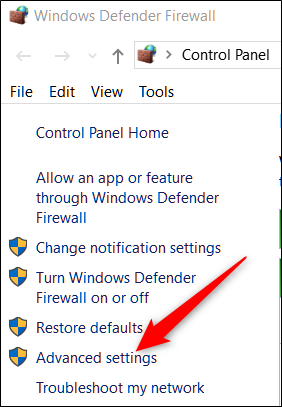




No comments
Please do not enter any spam link in the comment box